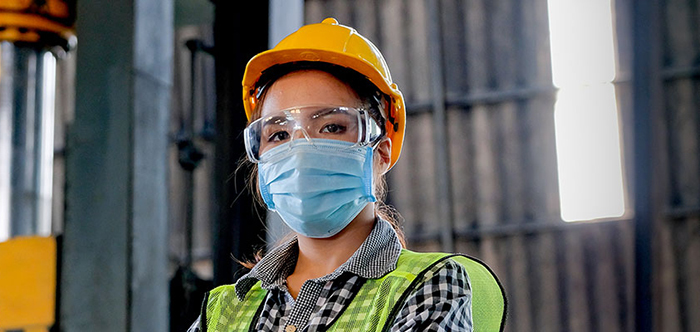|
As cases of COVID-19 continue to spike across the country and many jurisdictions have begun to require the use of face coverings in public, the Occupational Safety and Health Administration (OSHA) has unveiled and updated its Frequently Asked Questions discussing masks in the workplace.
|
According to OSHA wearing a surgical mask/face covering is safe for most people.
Medical masks, including surgical masks, are routinely worn by healthcare workers throughout the day as part of their personal protective equipment (PPE) ensembles and do not compromise their oxygen levels or cause carbon dioxide buildup. They are designed to be breathed through and can protect against respiratory droplets, which are typically much larger than tiny carbon dioxide particles. Consequently, most carbon dioxide particles will either go through the mask or escape along the mask’s loose-fitting perimeter. Some carbon dioxide might collect between the mask and the wearer’s face, but not at unsafe levels.
Like medical masks, cloth face coverings are loose-fitting with no seal and are designed to be breathed through. In addition, workers may easily remove their medical masks or cloth face coverings periodically (and when not in close proximity with others) to eliminate any negligible build-up of carbon dioxide that might occur. Cloth face coverings and medical masks can help prevent the spread of potentially infectious respiratory droplets from the wearer to their co-workers, including when the wearer has COVID-19 and does not know it.
However OSHA reminds us that surgical masks and cloth face coverings are not effective respiratory protection in the construction industry.
Employers must not use surgical masks or cloth face coverings when respirators are needed.
In general, employers should always rely on a hierarchy of controls that first includes efforts to eliminate or substitute out workplace hazards and then uses engineering controls (e.g., ventilation, wet methods), administrative controls (e.g., written procedures, modification of task duration), and safe work practices to prevent worker exposures to respiratory hazards, before relying on personal protective equipment, such as respirators. When respirators are needed, OSHA’s guidance describes enforcement discretion around use of respirators, including in situations in which it may be necessary to extend the use of or reuse certain respirators, use respirators beyond their manufacturer’s recommended shelf life, and/or use respirators certified under the standards of other countries or jurisdictions.
McCraren Compliance can help. We offer Respiratory Protection Training and Fit Testing required by OSHA.



